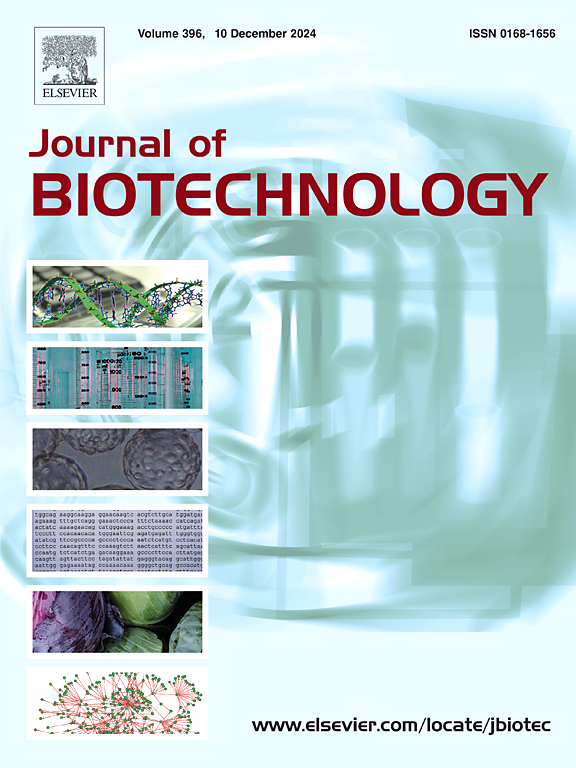In-line monitoring of bioreactor by Raman spectroscopy: Direct use of a standard-based model through cell-scattering correction
IF 4.1
2区 生物学
Q2 BIOTECHNOLOGY & APPLIED MICROBIOLOGY
引用次数: 0
Abstract
Raman spectroscopy and machine learning have become popular in in-line monitoring of bioreactors. However, traditional modeling processes typically entail extensive fermentation batches to collect learning datasets, which are significantly time–consuming and laborious. In addition, these models are limited to configurations with the same conditions as the training batches. The present work proposes a reproducible and adaptable modeling approach by combining standard spectra as a training dataset, with a simple means of correcting for cell scattering. Alcoholic fermentation by Saccharomyces cerevisiae is used as a benchmark. Initially, a partial least squares (PLS) regression model was developed based on the spectra of pure solutions of glucose and ethanol. Then, a mathematical expression was defined to estimate yeast concentration, allowing the correction of Raman intensity attenuated by cell scattering. The corrected spectra demonstrate close alignment with reference spectra in both shape and intensity. Validation of the methodology was conducted across numerous batches and one fed–batch bioreactor. As a result, the developed method enables the simultaneous monitoring of glucose, ethanol, and yeast concentrations, effectively addressing the challenge of implementing an independent standards based PLS model to manage the intricate compositional dynamics in bio–processes. The conclusion underscores the effectiveness of the proposed method and offers new prospects in biotechnological industries.
利用拉曼光谱对生物反应器进行在线监测:通过细胞散射校正直接使用基于标准的模型。
拉曼光谱和机器学习已成为生物反应器在线监测的流行方法。然而,传统的建模过程通常需要大量的发酵批次来收集学习数据集,非常耗时耗力。此外,这些模型仅限于与训练批次条件相同的配置。本研究提出了一种可重复、可调整的建模方法,将标准光谱作为训练数据集,并采用简单的细胞散射校正方法。以酿酒酵母的酒精发酵为基准。最初,根据葡萄糖和乙醇纯溶液的光谱建立了偏最小二乘法(PLS)回归模型。然后,定义了一个数学表达式来估算酵母的浓度,从而校正因细胞散射而衰减的拉曼强度。校正后的光谱在形状和强度上都与参考光谱非常接近。在多个批次和一个喂料批次生物反应器中对该方法进行了验证。因此,所开发的方法能够同时监测葡萄糖、乙醇和酵母的浓度,有效地解决了实施基于独立标准的 PLS 模型来管理生物过程中错综复杂的成分动态的难题。结论强调了所建议方法的有效性,并为生物技术产业提供了新的前景。
本文章由计算机程序翻译,如有差异,请以英文原文为准。
求助全文
约1分钟内获得全文
求助全文
来源期刊

Journal of biotechnology
工程技术-生物工程与应用微生物
CiteScore
8.90
自引率
2.40%
发文量
190
审稿时长
45 days
期刊介绍:
The Journal of Biotechnology has an open access mirror journal, the Journal of Biotechnology: X, sharing the same aims and scope, editorial team, submission system and rigorous peer review.
The Journal provides a medium for the rapid publication of both full-length articles and short communications on novel and innovative aspects of biotechnology. The Journal will accept papers ranging from genetic or molecular biological positions to those covering biochemical, chemical or bioprocess engineering aspects as well as computer application of new software concepts, provided that in each case the material is directly relevant to biotechnological systems. Papers presenting information of a multidisciplinary nature that would not be suitable for publication in a journal devoted to a single discipline, are particularly welcome.
 求助内容:
求助内容: 应助结果提醒方式:
应助结果提醒方式:


